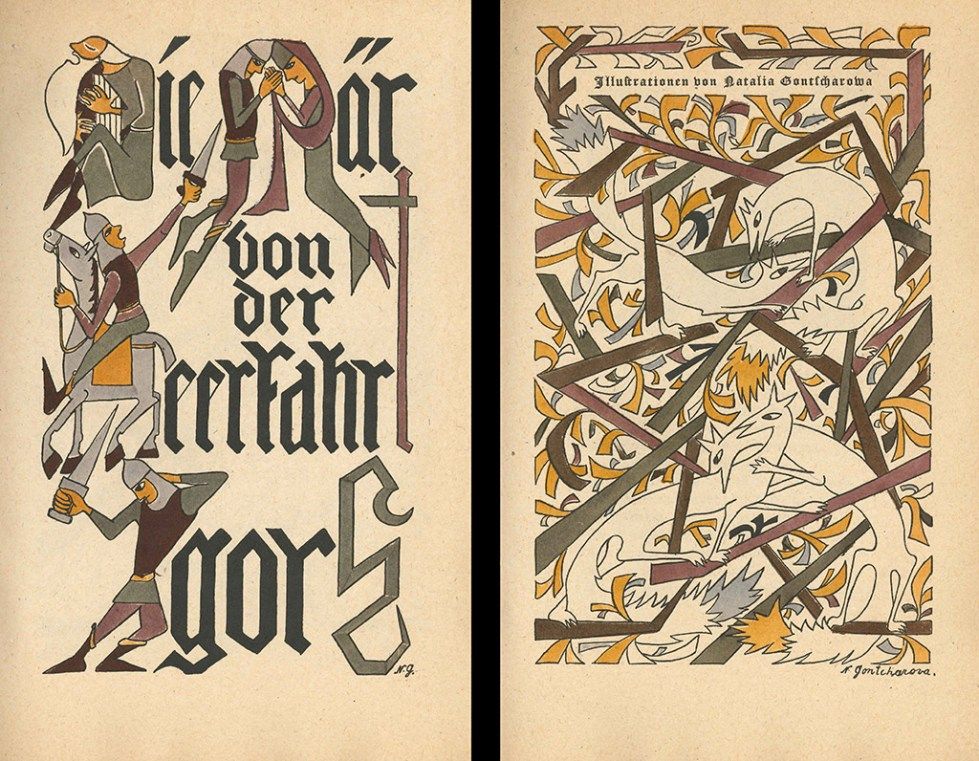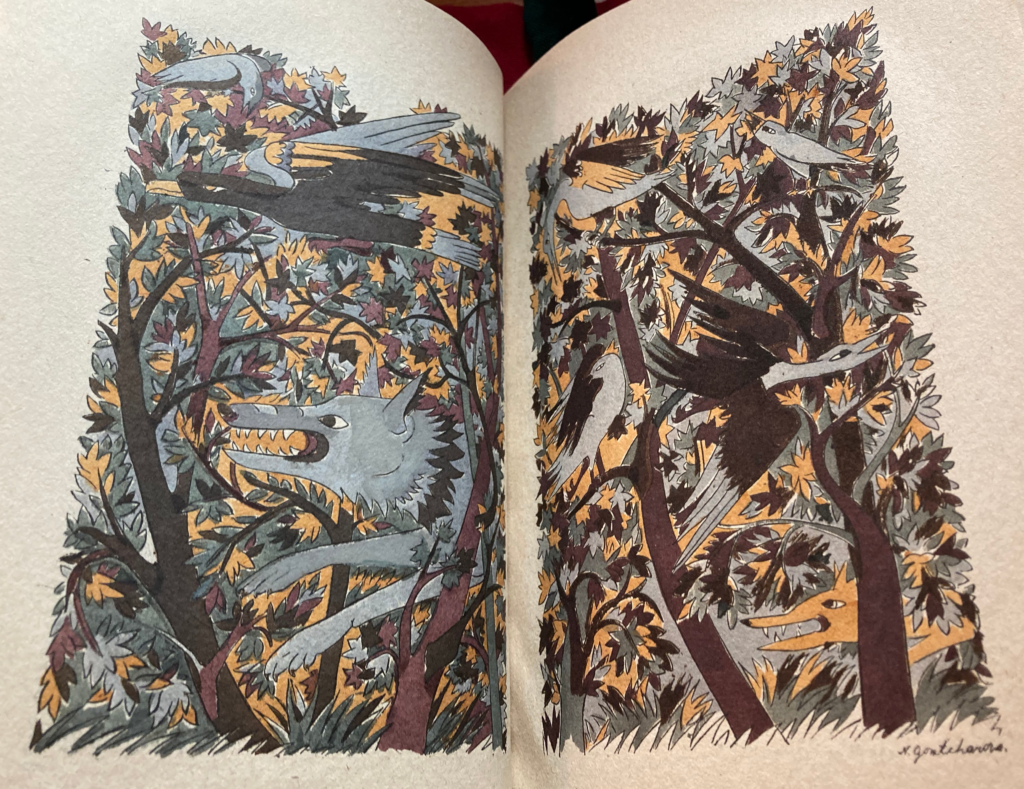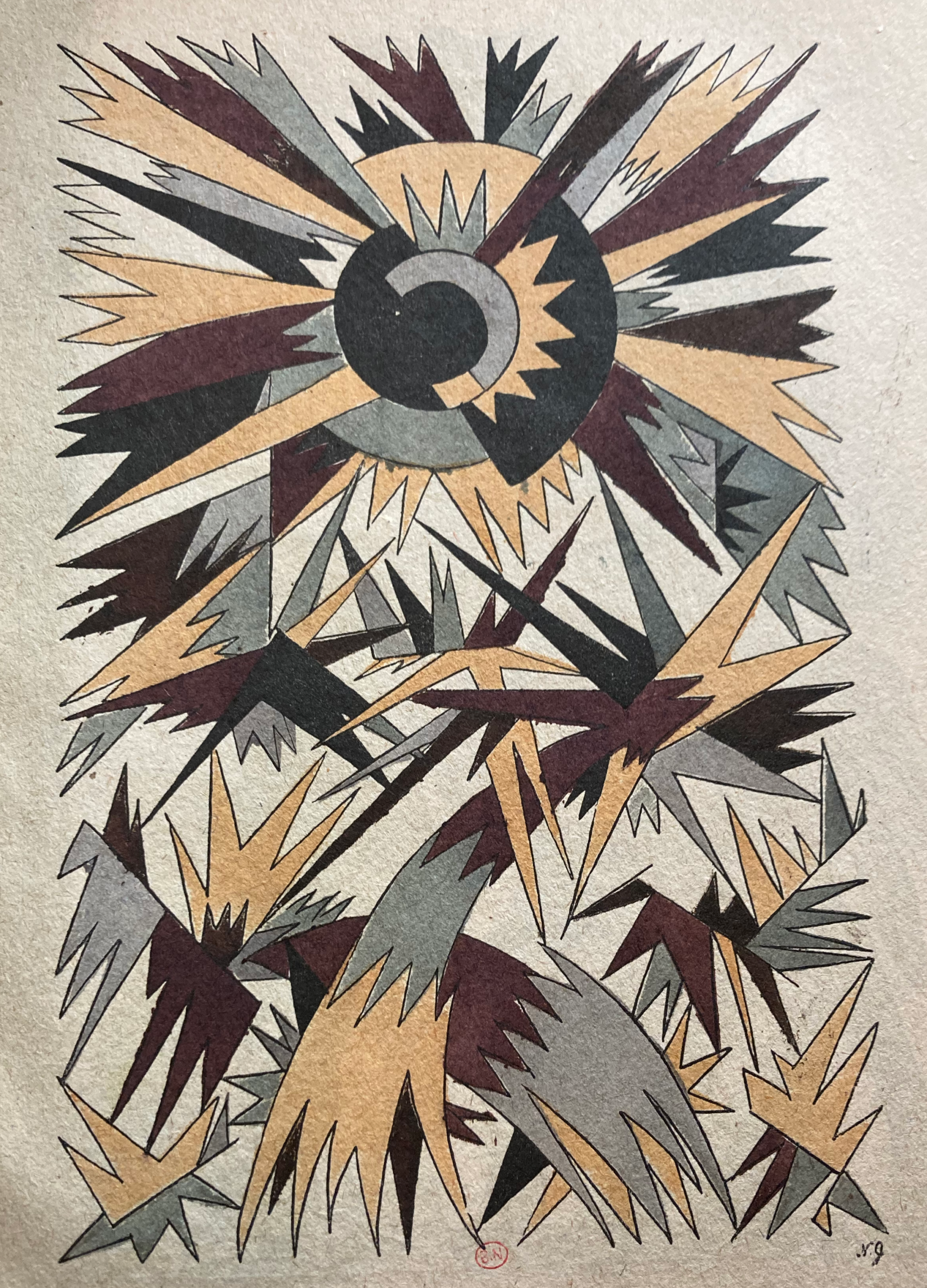Die Mär von der Heerfahrt Igors : der ältesten russischen Heldendichtung. Translated from Russian by Arthur Luther. — München, Orchis, 1923.
Quarto (185 x 270 mm). 80 pp. Half-title, title-page with illustrated border, 36 hand-coloured pochoir illustrations after Goncharova, printed boards with title to upper cover, cloth spine with title in green.

The epic poem, Слово о полку Игореве, written in the Old East Slavic language in the late 12th century, narrates about the failed raid of prince Igor against the Polovitsians of the Don river. The story was the foundation of Aleksandr Borodin’s famous 1890 opera Prince Igor. The present first translation to the German language has a supplement with a historical note and an introduction review of the Medieval Russian literature.
For this edition, Goncharova combined different modernist movements with the styles of Medieval illuminated manuscripts. All the illustrations are vibrating with interlacing bestial motives, always depicted in the dark and cold tones. Images of battles with rows of people’s silhouettes, repeated one in front of another, remind us of compositions in medieval illuminations, Ancient Greek vases, Byzantine art, religious icons and at the same time, of her cubist, futurist, and rayonnist works.

Compared to the birds from the Conte de Tsar Saltan, those in The Tale of Igor’s Campaign are far from peaceful or harmonious. Instead, they look tragically-epic and dangerous, ready to attack at any moment. Pospelov suggests that the detached and cold depiction of the fatal struggles again resonate with Goncharova’s anxious mood because of the challenging years of emigration and of the dismal news from Russia. He adds that in her diaries of the early 1920s, she sketched images of St. George, an unofficial symbol of Russia, “with a face of a dead man”, as opposed to her earlier patriotic series of the Mystical Images of War (1914) where she depicts St. George as a glorious savior riding a horse across the sky.

The article by A. Lukanova from the catalog to the exhibition of Larionov and Goncharova at the Tretyakov Gallery suggest that the impact of Western medieval culture on the illustrations for the tale of Prince Igor is obvious and that significant sources of influence on these illustrations were medieval stain glass windows. Indeed, numerous details suggest that the depicted actions take place somewhere in Western Europe instead of the Kievan Rus. In backgrounds of her illustrations, we see romanesque towers and churches whose architecture suggests us that they are more Catholic than Christian Orthodox, with an exception of her signature onion domes that occasionally appear in the landscape.
ghgh
- L’art décoratif théâtral moderne
- Samum
- Motdinamo
- Transparent Shadows and Forms
- Twelve. Scythians.
- Gorod (City)
- Conte de Tsar Saltan
- The Russian Ballet in Western Europe 1909-1920
- Tale of Prince Igor
- L’Annonciation: Roman
- Le thé du capitaine Sogoub
- Les Montparnos
- Les Ballets Russes de Serge de Diaghilew
- Skazki (Fairytales)
